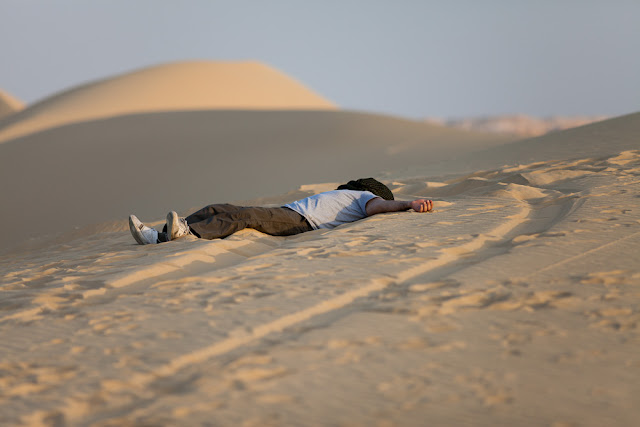Epic sunrise or sunset shots -- the kind where the sky is ablaze with hues of red, yellow and lavender -- don't happen purely by luck. We can't control the weather but we can pay attention to the kinds of conditions that are conducive to producing glorious sunrises and sunsets. Here are some techniques I learned for capturing sunrises and sunsets.
2. Cleaner air is better. I recall learning at school that sunrises and sunsets are red due to selective scattering of sunlight passing through the air molecules. I therefore thought that with some air pollution, sunrises and sunsets would be more impressive. I was wrong. The problem is that particles from air pollution tend to vary in size, so rather than scattering only a certain portion (e.g. blue and green) of the visible spectrum, most of the spectrum is scattered, so that air pollution produces a grayish light.
3. High or medium altitude clouds are usually better. A couple of reasons: First, there is more air pollution at low altitudes. Sunlight illuminating low clouds has to pass through a thick layer of this low-hanging air pollution, making the light more grayish. On the other hand, sunlight reaching higher clouds (cirrus, altocumulus) has less air pollution to scatter it. Second, even assuming there is no air pollution, higher clouds can catch the rays of the sun when the sun is lower in the horizon. At those steeper angles, the sunlight has to travel a longer distance to reach the clouds, resulting in more scattering and thus shifting the color to a deeper red.
Low altitude clouds include the cumulus and stratus family of clouds. In the picture below you can see that with cumulus clouds, even the peak of sunset colors is usually not impressive.
High altitude clouds include the cirrus family of clouds. The medium altitude clouds I like are the altocumulus clouds. (Altostratus is also medium altitude but is formless, like a fog in the sky). The shot below is a sample of a sunset with altocumulus clouds (unfortunately all I had with me at the time was a camera phone).
4. No cloud cover. Even if you have high or medium altitude clouds, too many low-hanging clouds can block the view of the high and medium altitude clouds. If there are stratus clouds (the fog-like clouds), I usually don't even bother to check what the sunrise or sunset looks like.
5. Timing. Assuming there are high or medium altitude clouds and no low-hanging clouds, it is best to start shooting about 15 to 30 minutes before sunrise or after sunset. With the sun below the horizon, the sunlight has to travel a little farther to reach the clouds, scattering more of the greens and blues and casting a deeper red light on the clouds.
SAMPLES
A couple of weeks ago, I noticed that we had cirrus and altocmulus clouds in the sky without too many low-hanging clouds, close to sunset. Conditions like those seem to be rare in our area, occurring only a handful of times in a year. I quickly drove to the airport and waited at a popular local spot for watching planes land. Fortunately I was rewarded with a beautiful sunset, and I took some photos of planes landing (my first time to try that).
The series of shots below are arranged in chronological order. The first couple of shots were taken at around sunset. You can see that after sunset, the colors become more intense before becoming darker.
BTW, for my equipment I used the Fuji S5 (I thought the S5's unparalleled highlight range would help protect the highlight details in the clouds) and the Tokina 11-16.
FOR FURTHER READING
The Colors of Sunset and Twilight
Fuji S5 Review
Tokina 11-16 Review
















































































